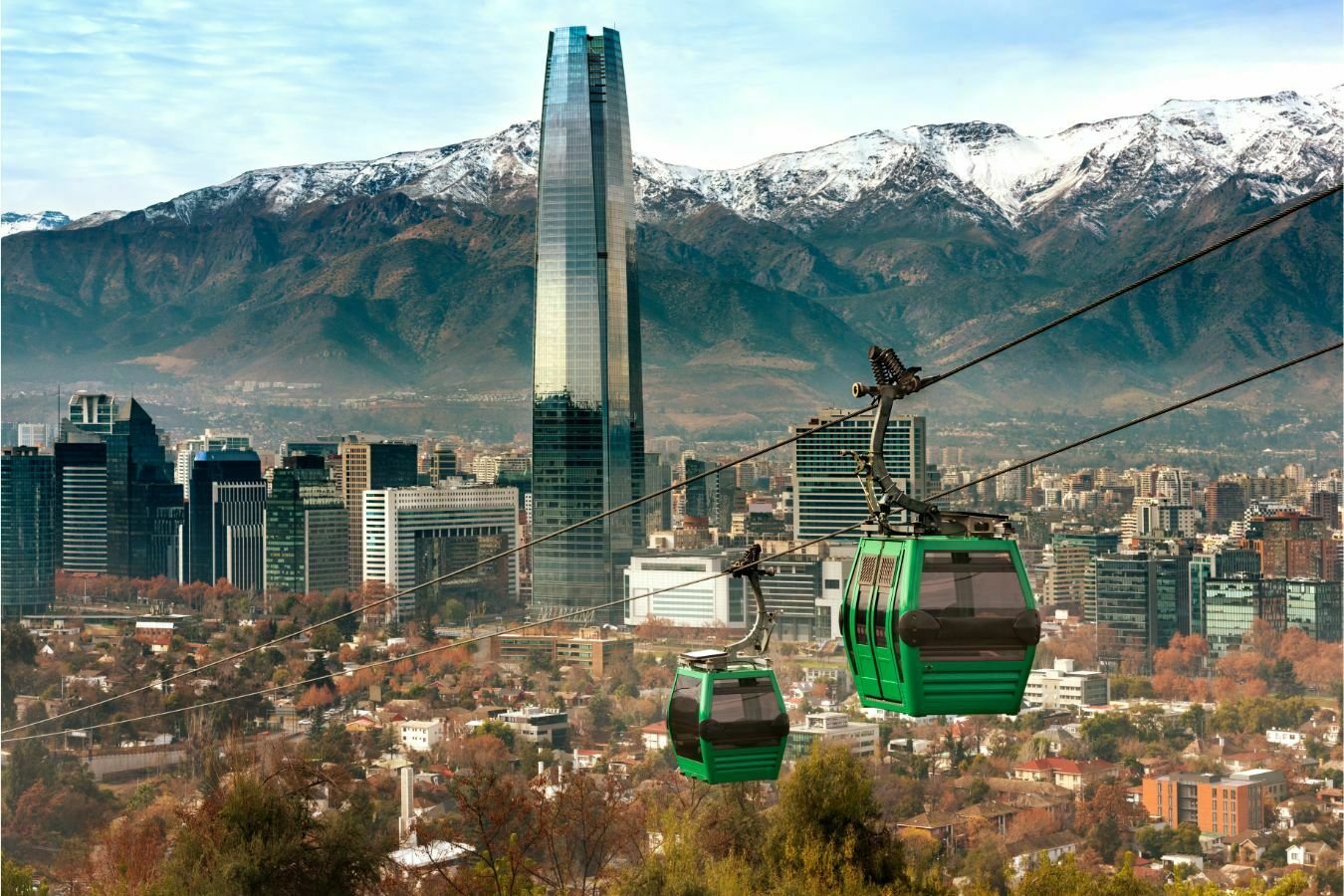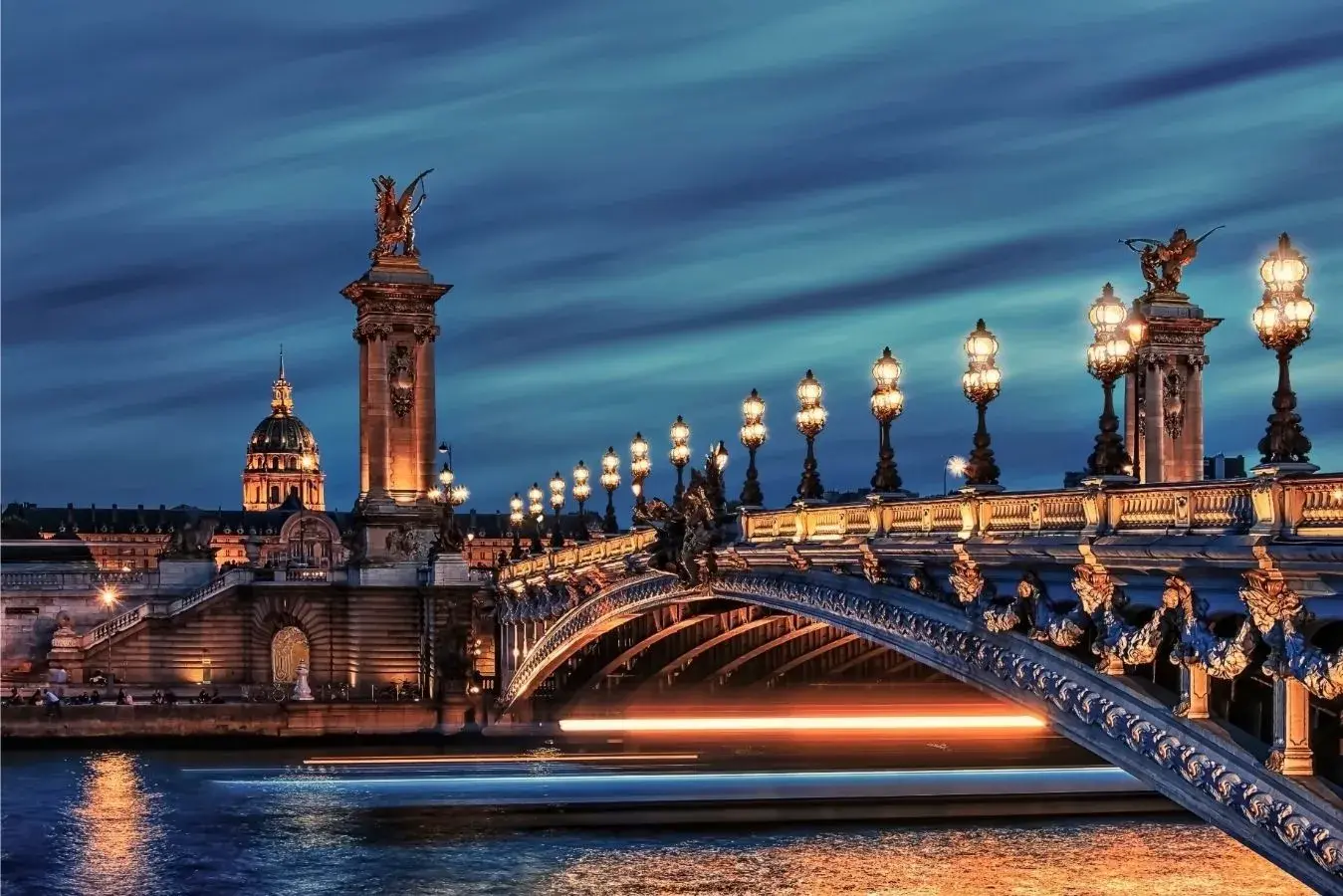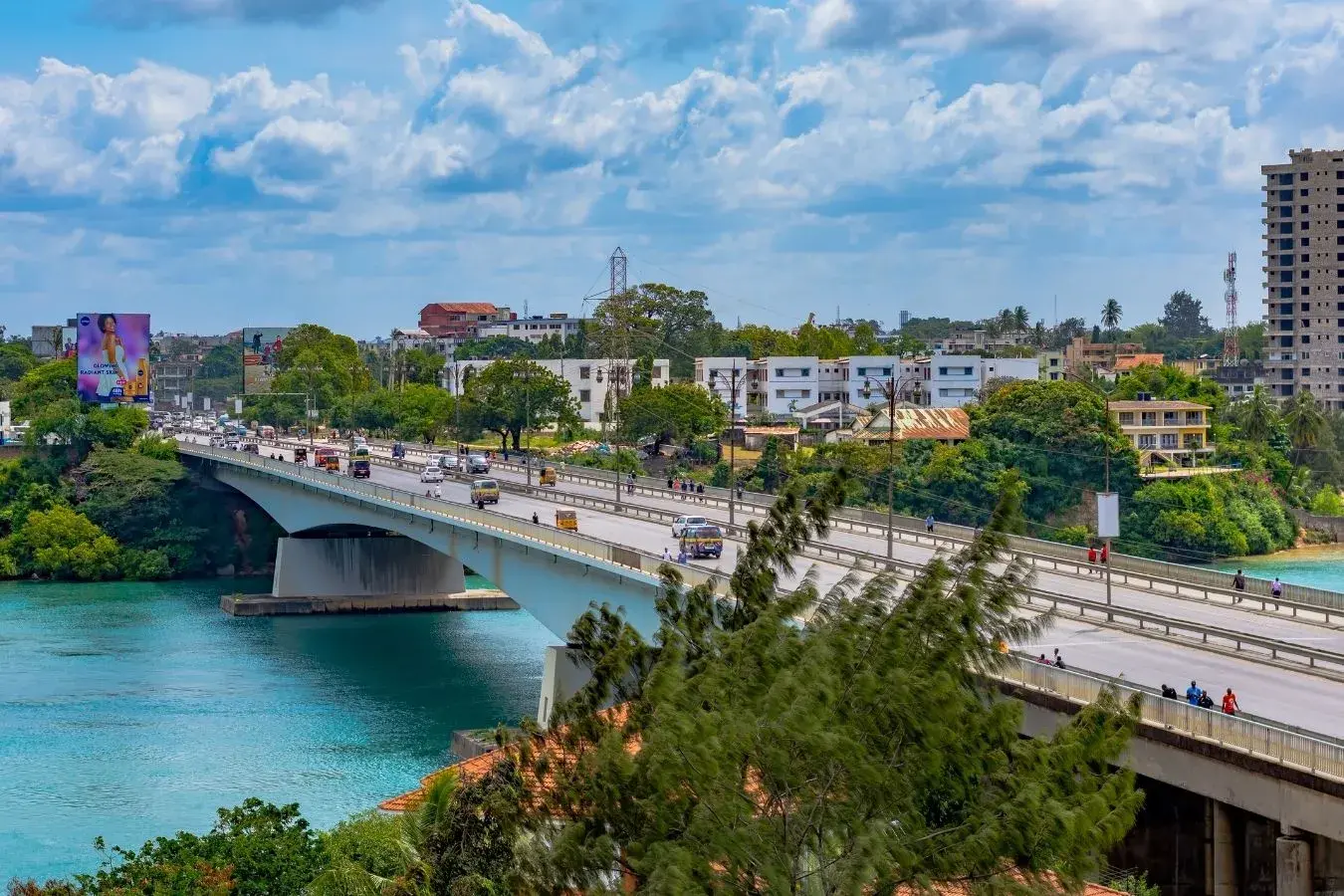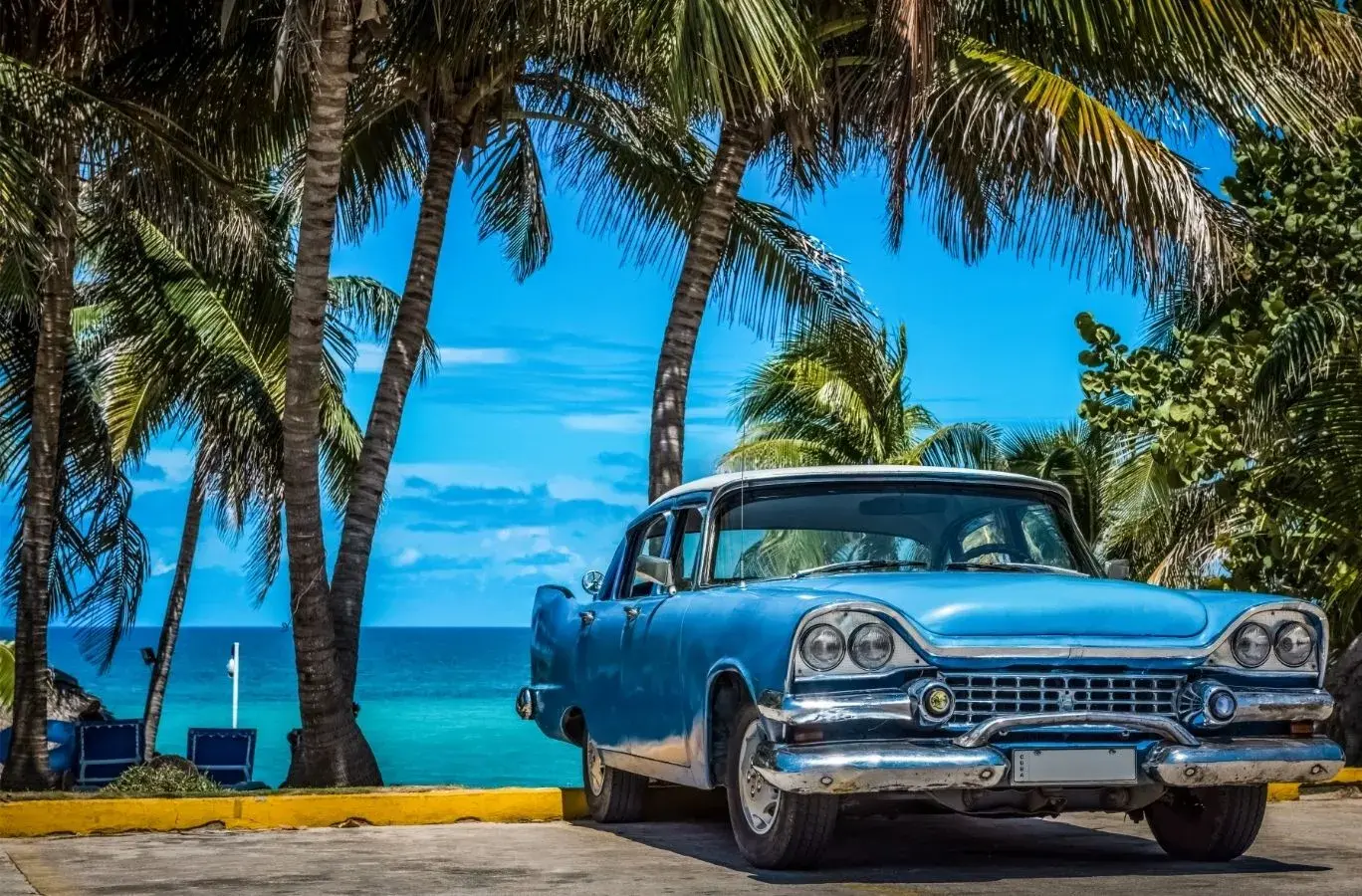Top Attractions & Things to Do in Alexandria


by Asia A. | Last Updated June 19, 2025
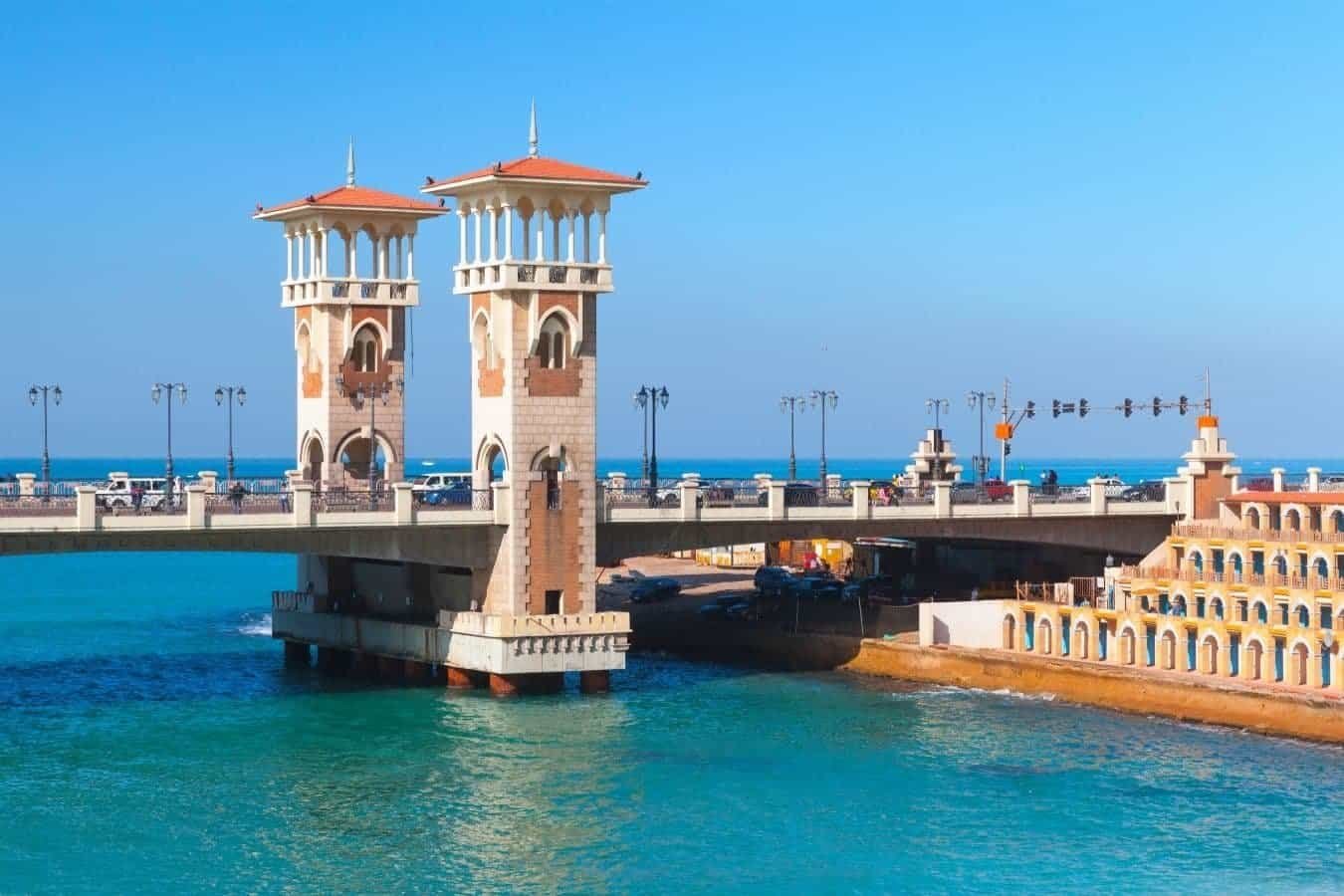
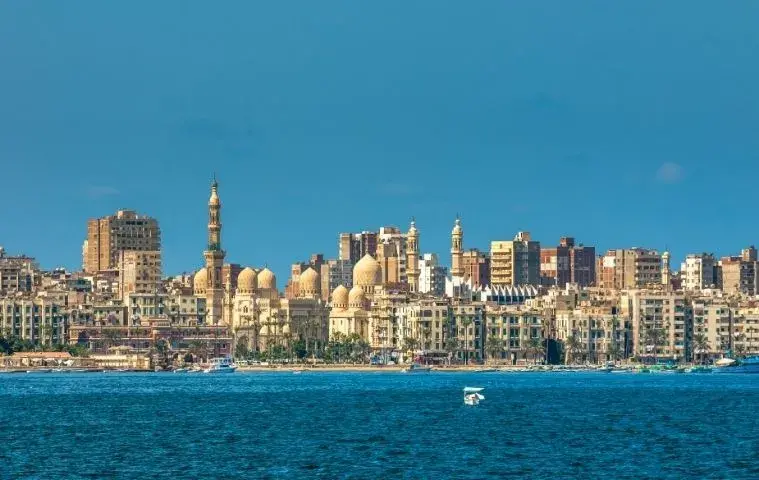

Alexandria is a great Mediterranean port city with a long history. Founded by Alexander the Great, the city is best known as the birthplace of the famous queen Cleopatra and the capital of the Roman Era in Egypt.
Although the city has always been known for its fascinating history, today, unfortunately, just a few historic remnants illustrate its rich past. Alexandria’s long, seafront Corniche Road leading to its Fort (where the famous ancient Pharos lighthouse -one of the seven wonders of the ancient world- once sat) is a popular summer destination for Egyptians and tourists alike.
Check out Alexandria’s museums for cool exhibits and ancient relics. The city is also home to the famous Library “Bibliotheca Alexandrina” which is one of the main attractions in the city.
Alexandria, the second-largest city in Egypt, was once the capital of the country. For many decades, this ancient metropolis attracted the world’s intellectuals as they journeyed there to study the ancient Egyptian civilization. It also has a reputation for having a bit of a wild side as well.
The city has a wonderful history, making it a very fun place to spend time in. We have a list of the top attractions in Alexandria that will help you plan your trip.
Bibliotheca Alexandrina
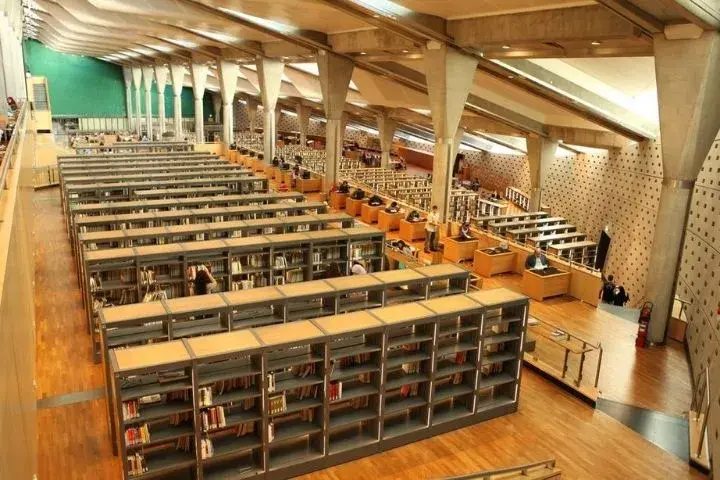

The Bibliotheca Alexandrina, which is also sometimes known as the Bibliotheca of Alexandria, is one of Egypt’s most important landmarks and the cultural heart of the city. Its collections of ancient manuscripts and rare books are among the most important in the world. It also contains one of the modern world’s most ambitious libraries and some museums featuring Alexandria’s history and heritage
The library’s design is centered around a huge sun disk that is reminiscent of a spaceship or a futuristic sci-fi museum, which presides over the waterfront Corniche. The structure contains an immense reading room and library, where visitors can marvel at the collection of rare books, the library’s capacity, is up to eight million persons.
The main attraction for visitors is the exhibition spaces below the main library, you can find that Alexandria’s Antiquities Museum has a great selection of artifacts, including some amazing pieces from the ancient Egyptian era through the Greco-Roman era.
The Library is also home to the Manuscript Museum, with a collection of ancient scrolls, documents, and manuscripts from across the ages. It has the largest collection of ancient papyrus fragments in the world.
Other exhibit halls host rotating contemporary art exhibitions, a permanent Egyptian folk art collection, and even a science museum for kids.
A walk on The Corniche
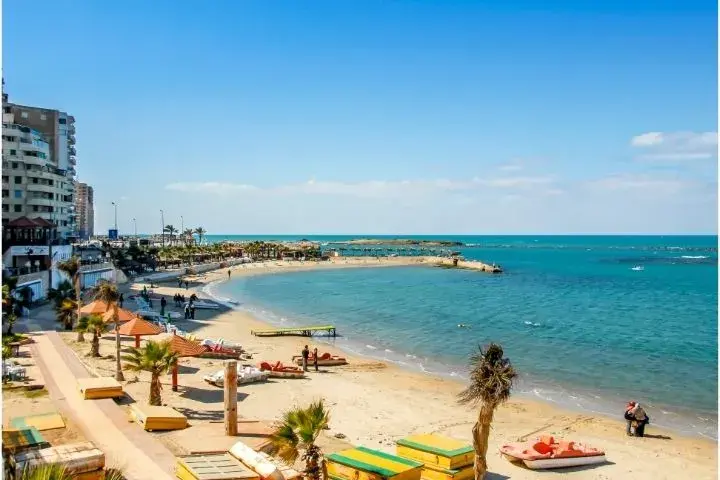

Corniche Road is a symbol of Alexandria as much as its monuments. It’s a great place to be if you want to meet locals, see the sunset over the Mediterranean, or simply watch people.
As you stroll along the Corniche, particularly from the Midan Saad Zaghloul to the Fort Qaitbey, it is possible to get a good glimpse of the period that will give you a real feel for the cosmopolitan elegance and decadence that distinguished this city from the late 19th century into the beginning of the 20th century.
Much of the architecture from the early 1900s still stands along the Corniche but it has fallen into serious disrepair due to damage by wind, humidity, and other natural forces over time.
Walking along this stretch is an absolute delight, Along the way, you can admire landmarks such as the Abu Abbas al-Mursi Mosque and the heritage hotels like the Cecil Hotel and Windsor Palace.
These two buildings were once the most prestigious places in the city and both feature in Lawrence Durrell’s classic books from the Alexandria Quartet series.
The Cecil is also famous for hosting Agatha Christie, and Winston Churchill during WWII. Egyptians’ idol, great singer, Umm Khalthoum.
Catacombs of Kom El-Shuqqafa
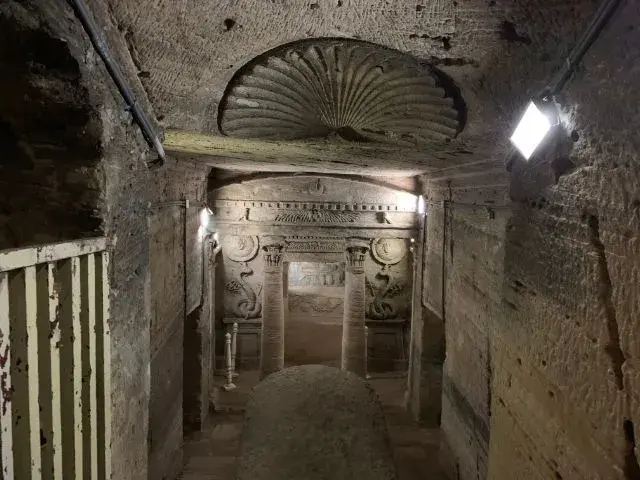

The Catacombs of Kom el-Shuqqafa in “Carmous” are an amazing example of how the Egyptians and the Greek-Roman styles blended to create an example of architecture that features that era. The catacombs are a series of burial chambers in the rock beneath a hill in Alexandria, Egypt. They are thought to date back to the second century A.D.
In 1900, they were discovered after a donkey had fallen into them. They are laid out at numerous levels with sarcophagi and loculi.
A spiraling staircase leads down into the ground to the main rotunda. In your visit, you can see to the right the main chamber housing many mummies and also a Sepulchral Chapel with 91 loculi, each large enough to accommodate three or four mummies. To the left is a large room called the Triclinium Funebre which was used for banquets in honor of the dead.
Fort Qaitbey
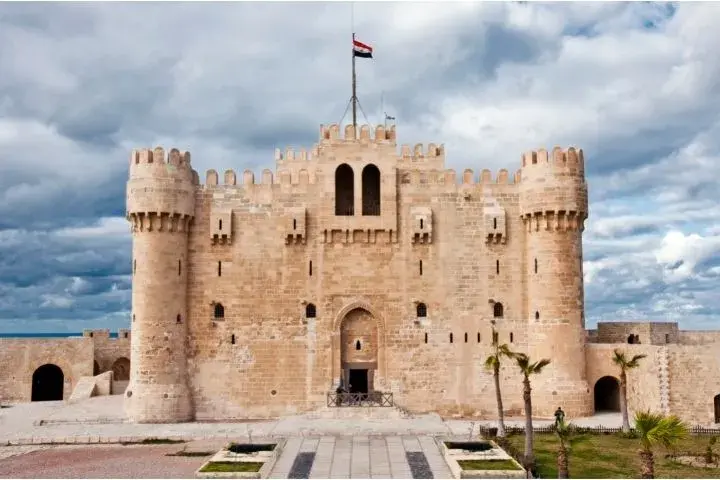

A walk along the Corniche road will lead you to Fort Qaitbey. It was built as a watchtower to monitor incoming traffic and ships. the site where it was built in the site where the Pharos Lighthouse (one of the seven wonders of the ancient world, which was toppled by a violent earthquake in 1303) once existed in the location, but since 1840 it has been standing to guard Alexandria.
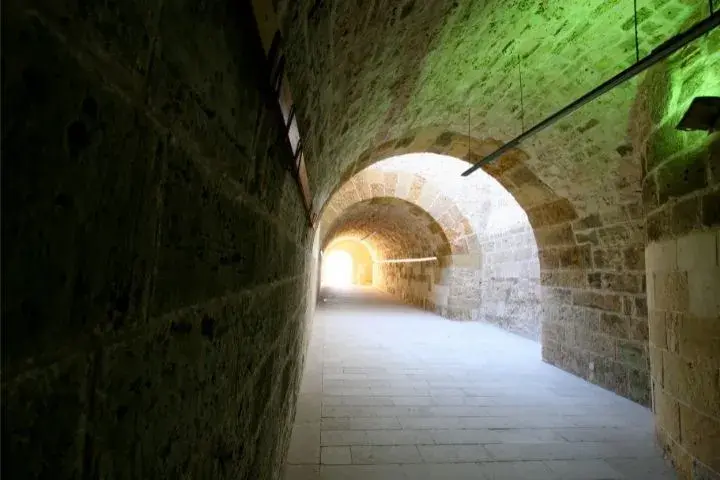

Fort Qaitbey was built by Mamluke Sultan Qaitbey to protect this important Egyptian port from attack using debris from the tumbled lighthouse.
The interior of the fortress is a series of stone-walled chambers with the roof open to reveal views over the Mediterranean.
Roman Amphitheatre & Kom el-Dikka
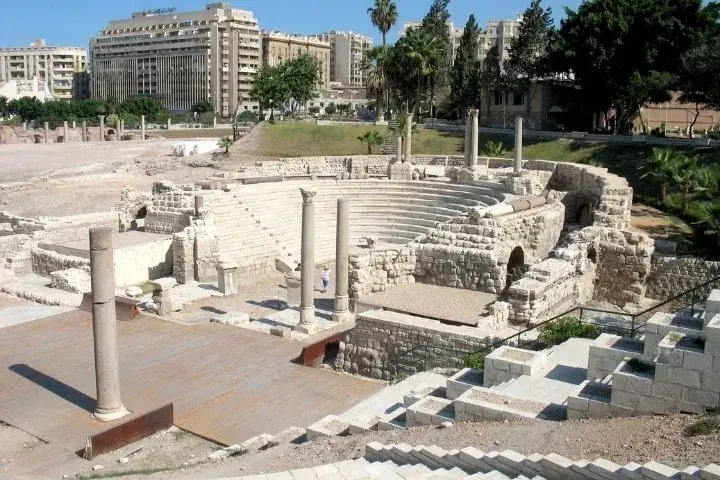

In the 1960s, Egypt’s second-largest city, Alexandria, became a construction hub as its government began to rebuild the city. Work was underway at Kom el-Dikka to transform the area into a new housing project when a team of archaeologists discovered Roman ruins. They found a stunningly well-preserved Roman theater that had been covered up for centuries by the city’s growth and decay.
The area has become a small archaeological park with remains from Alexandria’s Greco-Roman period. This includes the theater, the Ptolemaic temple, the Roman bathhouse, and various Roman-era villas
Dive Alexandria’s Underwater Ruins
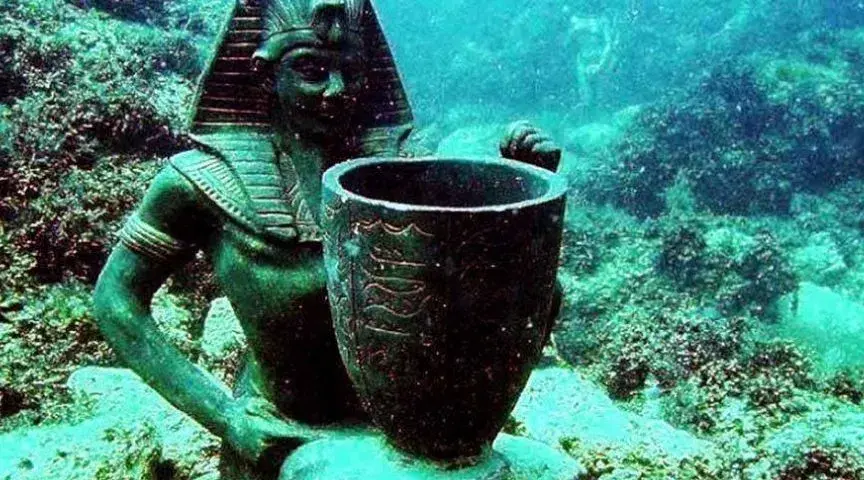

Diving Alexandria’s east harbor is about learning about ancient history underwater. This is because the site’s ancient ruins are full of interesting artifacts, tumbled statues, columns of the ancient city.
Unlike diving in the Red Sea with its crystal clear water, the underwater visibility here is a bit lower, but if you’re an underwater archaeologist, the site here seems to lead you to plenty of treasures.
Archaeologists have located the ancient port city of Heracleion-Thonis in northeast Alexandria and are bringing its relics to light in a process that is known as antiquities excavation. These priceless treasures are now on display in Alexandria’s museums.
Now that the big game is over, a whole lot of folks are looking to hit the water. But where? The most popular spots around town are still in the Eastern Harbor. Many locals have come to refer to these locations as “The Cleopatra’s Palace” although there is no historic confirmation that it was a former palace site.
The Ruins contain some sphinxes, statutes, and tumbled columns which make diving to the site an interesting experience.
Alexandria National Museum
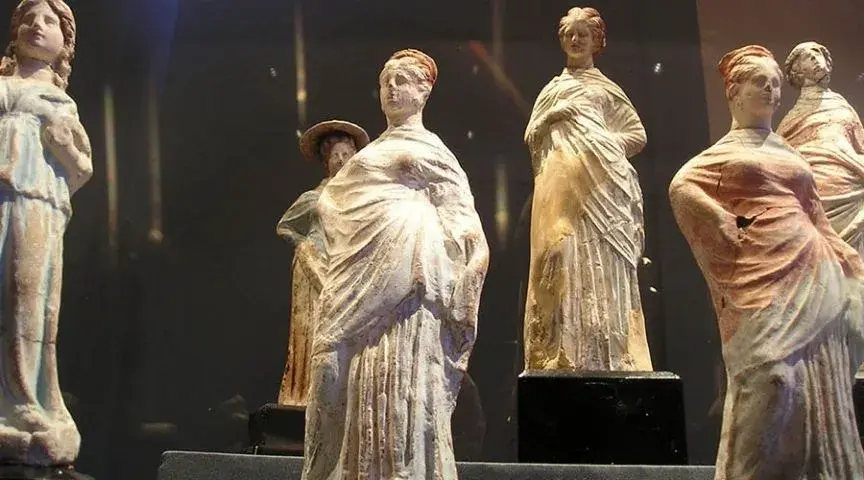

Alexandria’s National Museum is a good place to get a glimpse into the vast history of this fascinating city. Inside the museum, there is a comprehensive collection of ancient artifacts from the Ancient Egyptian(Pharaonic) era to the Hellenistic era, when Alexandria and Egypt were governed by the Ptolemy dynasty begun by Alexander the Great, and moving to the Byzantine then Islamic era.
The ground floor exhibits sculptural and artifacts from the underwater archaeological explorations of the obscure port city of Heracleion-Thonis in Aboukir Bay, are the museum’s main attraction.
The Alexandria National Museum is a wonderful example of how to bring history to life through the use of well-thought-out exhibits, with a focus on education. The museum is an exceptional place to visit and deserves to be included in the list of tourist attractions in Alexandria.
Pompey’s Pillar
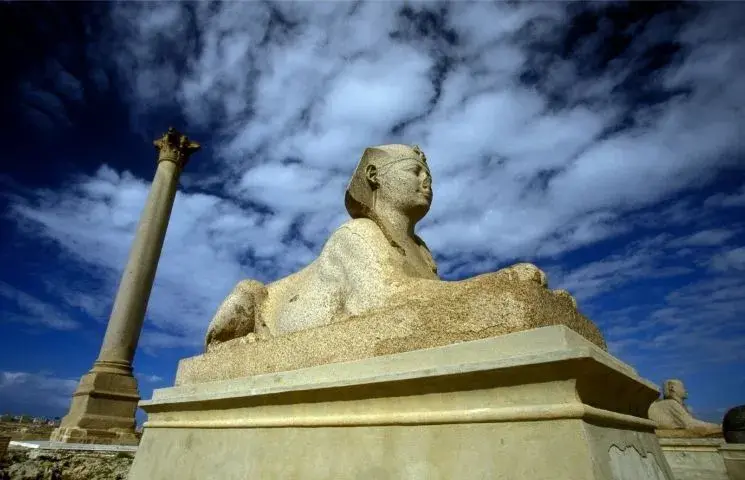

In the Carmous district in Alexandria nearby the Catacombs of Kom el-Shuqqafa where many of Alexandria’s ancient monuments are found. Among them is a hill that contains the only intact example of ancient architecture in the city.
Pompey’s Pillar rises from the remnant of the ancient and famous Serapeion (Temple of Serapis), which was once used to store the abundance of manuscripts from the Great Library of Alexandria.
This column made of red granite with a Corinthian relief, rising to a height of almost 27 meters, has nothing to do with Pompey and was instead set up in AD 292 to honor Diocletian, who provided food for the starving population after the siege of the city.
The Serapeion was once an important religious site. There were several chambers, some of which are still intact. You can get into them if you can climb down the stairs at the side.
Montazah Palace Gardens


A peaceful refuge in the city’s eastern edge, Montazah is a luxuriant haven of tall palm trees, trimmed lawns, and blossoming flowers. It was built as a hunting lodge in the 1890s by Khedive Abbas Hilmi. It was later passed substantially by King Fuad, who used it as his summer residence and replaced by the present-day Ras el-Tin Palace as the royal family’s summer retreat.
The Montazah Palace, with its decorated Florentine-inspired towers, is not open to the public. But the gardens are open to the public and are a welcome respite after a day spent in the bustle of Alexandria.
On the coast of Montazah Palace is a small private beach with a bridge leading to a small island. If you need a dose of peace, a trip to Montazah will do the trick before getting back on the downtown grind.
Alexandria’s Fish Restaurants


Alexandria’s most popular seafood destinations are in Alexandria are the harbor waterfront area and the adjacent Anfushi neighborhood which is situated west of Fort Qaitbey and the harbor, Anfushi stretches across a warren of lanes lined with restaurants, and cafes.
Just after sunset, Anfushi is the city’s most energetic area, with traditional coffee shops serving tables on sidewalks and out onto the street, and the smell of sheesha and grilled fish filling the air. Anfushi has more than its restaurants. It’s worthwhile exploring Anfushi further.
Along the city’s waterfront and the port of Alexandria lies Qasr Ras El-Tin Street, where the city’s shipyards are located. While further along the street is the bustling fish market.
Ras El-Tin Palace


The luxurious Ras el-Tin Palace was built as a summer residence for sultans and their families because the heavy heat in Cairo’s summer made it unbearable at times.
It is also a popular location linked to King Farouk – the last Egyptian king- before he stepped down and went into exile in Italy after the 1952 revolution which ended the monarchy in Egypt and the country became a republic.
The White Palace, a landmark building in Alexandria, is no longer used for its original purpose and is currently under the Egyptian Navy’s command, which means it is not open for public visits, but it is still a tourist attraction. The view from its monumental white facade is worth seeing.
Abu Al-Abbas Al-Mursi Mosque
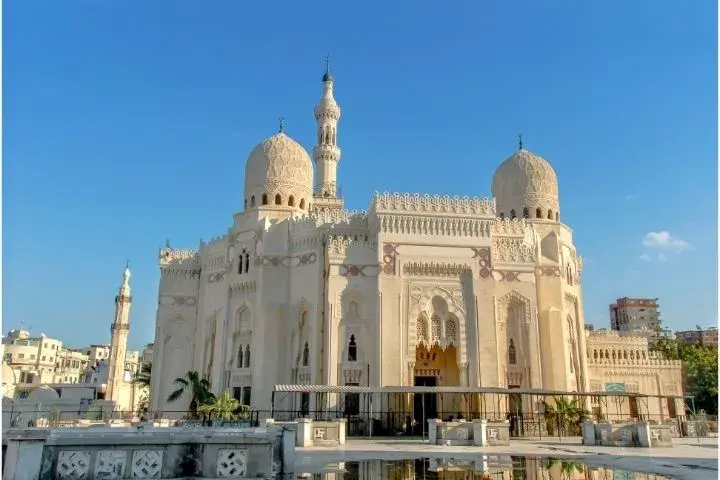

One of the most notable landmarks in Alexandria is the Abu Al-Abbas Al-Mursi mosque which was built in 1796 to commemorate the 13th-century Sufi holy man Abu Al-Abbas Al-Mursi.
Sheikh Abu Al-Abbas is originally from the city of Murcia (in Andalusia, Spain) but went on to become an important Islamic leader in Alexandria. His teachings are still well respected today in Egypt. The Mosque is considered one of the most important Islamic sites.
The exterior architecture of the building is the most striking feature, but if you’d like to see the mosaic halls inside the mosque, please dress respectfully and please remove your shoes at the main entrance.
El-Alamein War Memorials
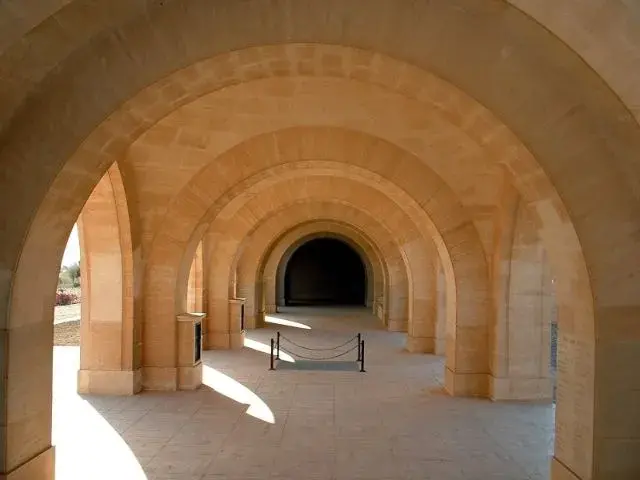

El Alamein is a small desert town located 112 km from Alexandria on the Mediterranean Sea. It holds a place in modern history as being the first decisive Allied victory in WWII.
The brutal battles that took place here in October 1942 killed or wounded more than 80,000 soldiers from countries as diverse as Australia, New Zealand, India, and Great Britain. German and Italian forces also faced terrible losses on this battlefield. This was one of the largest and most important battles of World War II. The war memorials represent a touching reminder of the 13 days of fighting that took so many lives.
The El Alamein War Museum tells the story of the El Alamein campaign very well, with loads of military collectibles on display.
Check out the Commonwealth Cemetery, a beautifully kept monument for all fallen soldiers. You’ll find tidy rows of tombstones within a well-tended desert garden.
On the coastal highway, north of town is a German Memorial commemorating 4,500 soldiers who died in the battles. They also contain comprehensive exhibits about the war. Not too far away, there’s an Italian memorial that’s just as impressive which offers visitors access to an interesting museum displaying relics of the war period.
Visit Aboukir


Standing at a site where you are protected on all sides by forts, the fishing village of Aboukir – about 24 km north of Alexandria – has a remarkable history that goes beyond its size.
It is the location where the Battle of the Nile took place on August 1, 1798, after which Nelson imposed a devastating defeat on France.
At the Battle of Aboukir in 1799, Napoleon beat an army of Turks despite being outnumbered by ten to one. A year later, Sir Ralph Abercromby beat the remaining of the French forces in Egypt, forcing them to flee.
The naval battles that took place near Alexandria are a good reason for military history enthusiasts to visit Aboukir.
A great way to end your day is to enjoy a seafood meal by the Mediterranean sea as the sun sets. Egypt’s Aboukir Bay is known for its delicious seafood. You’ll love the sea views as well as the relaxing atmosphere.
Alexandria’s Main Souk Area


Alexandria’s main souq is located in Midan Tahrir in the city center. The market stretches through the streets heading west from the square.
Although there’s not a lot specifically targeted to tourists, this is a great opportunity to find something that suits your style. The souq often features products from the local areas and the prices can be very affordable. It’s also a great place to capture some of Alexandrian life!
The entire souq area is a maze of lanes that flow off from each other, with each alley specializing in different products. The souq experience offers a lot of fun, so make sure to get lost here and explore.
Tours & Excursions in Alexandria,Egypt
Visa & Health Requirements
Please make sure you check all the information you need to know about the passport, visa, and health requirements of your destination.
Check out all the data provided by IATA (International Air Transport Association)


